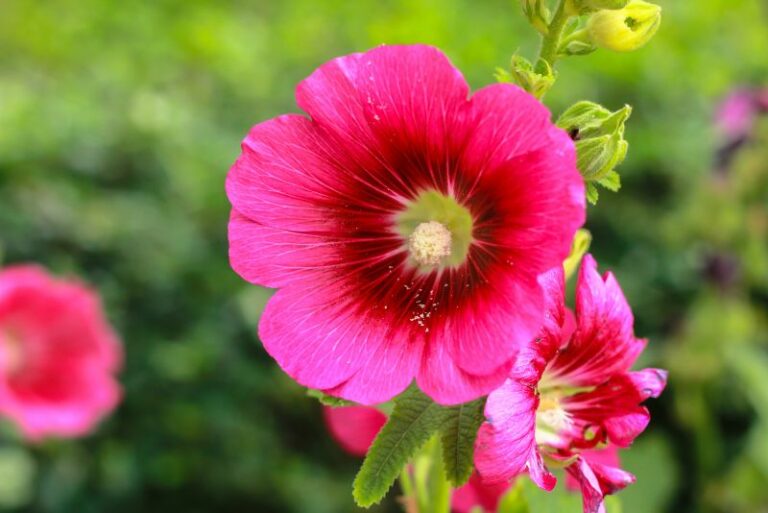DIY Guide: Making Your Own Fresh Cut Flower Food
There’s an innate pleasure in bringing the natural beauty of the outdoors indoors, especially in the form of a colorful bouquet. Whether you’ve picked blossoms fresh from your garden or are indulging in a market find, keeping cut flowers vibrant for as long as possible is a shared goal. Most flower enthusiasts resort to using commercial flower foods often provided with bouquets. But did you know that crafting your own fresh cut flower food can be both beneficial to your blooms and your pocket? This comprehensive guide will not only walk you through the process of DIY flower food preparation but also explain why it’s a step worth adding to your floral care routine.
The Importance and Impact of Flower Food

Professional florists and avid home gardeners alike understand the significance of floral nutrition. Fresh cut flower food is enriched with ingredients that help flowers remain hydrated, boost their resilience to microbial attacks, and support their natural development. The result is longer-lasting, more robust blossoms that continue to grace your living space with their presence.
But what if you could enhance this power by customizing the food to suit the specific needs of your floral varieties at home? This question forms the heart of the DIY approach to flower food.
Why Make Your Own Fresh Cut Flower Food?
Store-bought flower foods are a convenient solution, but they don’t always offer the tailored nourishment that your blooms crave. By creating your own concoction, you can cater to your specific plants and even experiment with formulas that suit different flowers, seasons, and environments.
Benefits of DIY Flower Food:
- Tailored to Your Plants: Each family of flowers has its unique nutritional requirements. When you make your own flower food, you craft a blend that aligns with what your flowers need most.
- Control Over Ingredients: Relying on your pantry for the ingredients means knowing exactly what’s going into the mix. You can exclude any elements that may not be beneficial or sustainable.
- Cost-Effective: Most DIY flower food ingredients are everyday items, making your custom solution a budget-friendly option, especially for those who work with flowers regularly or on a larger scale.
- Creative and Personal Touch: There’s satisfaction in personalizing your floral care routine. It’s an opportunity to exercise creativity and be part of the entire floral life cycle, from growth to display.
- Eco-Friendly Solutions: In many cases, homemade floral preservatives can be less harmful to the environment and your household, especially if you’re using organic materials or less chemically potent substitutes.
Now that the benefits are clear, let’s dive into how to create your own flower food that’s not only effective but fun to make.
Ingredients for DIY Fresh Cut Flower Food
Before filling your pitcher, you need to gather the right components. The beauty of homemade flower food is the variety of items you can use, many of which are likely already stocked in your kitchen or can be found in your local grocery store or garden center.
Must-Have Ingredients:
- Sugar: Acts as a source of energy for the flowers, much like the role of sugar for humans. It enables bloom respiration and helps flowers to open and last longer.
- Bleach: An Antimicrobial agent that reduces the growth of bacteria and fungi in the water, which can lead to blockage in the stem.
- Citric Acid (or Lemon Juice): Acidifies the water, which helps with water uptake and maintains a pH level that’s beneficial for some flowers.
- Water: Serves as the primary solvent and medium for other ingredients. Chosen water should be free from contaminants that might harm flowers.
Optional enhancers might include:
- Aspirin: Contains acetylsalicylic acid, which can lower pH levels, assist in water uptake, and also inhibit microbial growth.
- Vinegar: Contains acetic acid, which can mimic the effects of citric acid in water and reduce the growth of bacteria in the vase.
- Soda: Some gardeners report using clear, non-diet soda to provide sugar and acidity to the water, although it’s not as commonly used as sugar and citric acid variations.
- Copper Pennies or Pins: Some believe that the copper can help kill bacteria in the water, but its effectiveness is contested and should be used with caution due to potential toxicity for certain plants.
Each of these ingredients plays a role in your homemade flower food recipe, and you can adjust the amounts to match the volume and quantity of your flowers or experiment based on their specific needs.
Step-by-Step Guide to Making Fresh Cut Flower Food
Let’s transform these items into a potent recipe that can be a game-changer for your floral displays. It’s an intuitive process and can be adjusted based on the type of flowers or environmental conditions.
Step 1: Gather Your Ingredients and Tools
To start, ensure you have all your ingredients ready. You’ll also need a measuring spoon, a standard tablespoon or teaspoon depending on the quantity you want to make, and a clean vase or pitcher to mix your food. Sanitizing your tools beforehand ensures the prevention of contamination.
Step 2: Mix the Ingredients in the Right Proportions
The following proportions are a guide for a general mix. Depending on the size of your vase and the amount of flowers, you can scale up or down. Here’s a basic formula:
- 1 part sugar: For every quart (liter) of water, add 2 tablespoons of sugar.
- 1 part citric acid: This can be one tablespoon of lemon juice for every quart of water and sugar combined or the equivalent amount of water mixed with citric acid, or another acidic substance like vinegar.
- 1/2 part bleach: For every quart of the sugar and citric acid mixture, add one tablespoon of household bleach. This might seem counterintuitive as bleach typically isn’t something you want near your flowers, but in small, controlled doses it can indeed be beneficial in keeping the water sterile and the stems clear.
- Optional Enhancers: If using aspirin, dissolve one tablet (325 mg) in the sugar and citric acid mixture. For vinegar or soda, use your judgment to keep the water’s sweetness and acidity in balance.
Step 3: Add Water and Stir
Fill your vase with the correct amount of water for the size of your arrangement. Then, one by one, add each ingredient according to the ratios you’ve calculated. Stir the solution, so all ingredients are mixed thoroughly.
Tips for Using Fresh Cut Flower Food
Proper application is crucial to reaping the benefits of your homemade flower food. Here are some best practices:
Timing is Everything:
Prepare your vase and floral food immediately after cutting the stems of your flowers. This ensures that the flowers receive nutrition from the very beginning.
Water Quality:
Use good quality water, preferably non-chlorinated. If you must use tap water, let it sit out for 24 hours to allow the chlorine to dissipate.
Stem Trimming:
Always trim the ends of the flower stems at an angle, under running water if possible, to promote efficient water uptake.
Change the Water and Reapply Regularly:
Soft stems, called vascular bundles, can become laden with air bubbles or debris, as well as bacteria. By changing the water and reapplying flower food every 2-3 days, you remove these blockages and maintain a healthier environment for your flowers.
Benefits of Using Homemade Flower Food
The investment of your time in making your own fresh cut flower food is a rewarding practice. Healthy vase life, vibrant blooms, environmental conservation, and cost savings are just a few of the payoffs.
Longer Vase Life:
Well-fed flowers are happy flowers. With the right nutrients, you can expect your arrangements to last significantly longer than if they were placed in water alone.
Healthier Blooms:
Flowers given the proper care will still be opening days after they would have wilted in untreated water. The transformation is visible, with petals that are full and colorful.
Cost-Effective and Efficient:
Crafting your floral food means you’ll always have a supply at your fingertips. You can create enough for multiple arrangements with non-perishable ingredients. It’s both cost and time-efficient.
Satisfaction in Craftsmanship:
This extra step in your flower care routine is a form of self-satisfaction. Knowing you’ve personalized the care for your beautiful blooms is a practice that brings greater connection to your flowers and the process of appreciating them.
conclusion
The advantages of making your own fresh cut flower food are numerous. From prolonging the life of your bouquets to engaging in a healthy, creative process, the value added to your floral care routine is significant. So, next time you’re arranging a vase of flowers, consider this DIY flower food for a personal touch that will be evident in the lasting vitality of your floral displays.






